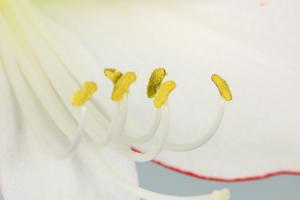Introduction
When it comes to plants, most of us are only familiar with the parts that we see above the ground. Flowers, leaves, and stems are just a few examples of the many components that make up a plant. However, there's a whole world beneath the surface that we often forget about. Within each plant is an intricate network of cells that work together to keep the plant healthy and thriving. In this article, we'll take a closer look at what's in a plant cell.
Cell Wall
The first structure we'll examine is the cell wall. Unlike animal cells, which have a flexible membrane, plant cells have a rigid outer layer that provides support and protection. The cell wall is made up of cellulose, a carbohydrate that's also found in the stems, roots, and leaves of plants. In addition to providing structural support, the cell wall also helps regulate the amount of water that enters and exits the cell.
Chloroplasts
One of the most important structures in a plant cell is the chloroplast. These organelles are responsible for photosynthesis, which is the process that plants use to convert sunlight into energy. Chloroplasts contain chlorophyll, a green pigment that absorbs light energy. They also have their own DNA, which allows them to reproduce and divide like other living organisms.
Vacuoles
Another important component of plant cells is the vacuole. These structures are essentially sacs filled with fluid that help regulate the pressure within the cell. In addition to maintaining turgor pressure, vacuoles also play a role in storing waste and other materials that the cell doesn't need.
Cytoplasm
Finally, we come to the cytoplasm. This is the gel-like substance that fills the cell and surrounds all of the other structures. Within the cytoplasm are various organelles and structures, each with its own specific function. Additionally, the cytoplasm provides a medium for all of the biochemical reactions that occur within the cell.
Conclusion
In summary, a plant cell is a complex and specialized structure that's made up of many different components. From the cell wall to the chloroplasts and vacuoles, each structure plays a vital role in maintaining the health and function of the plant. By understanding what's in a plant cell, we can gain a greater appreciation for the beauty and complexity of the natural world.

 how many times do yo...
how many times do yo... how many planted tre...
how many planted tre... how many pine trees ...
how many pine trees ... how many pecan trees...
how many pecan trees... how many plants comp...
how many plants comp... how many plants can ...
how many plants can ... how many plants and ...
how many plants and ... how many pepper plan...
how many pepper plan...































